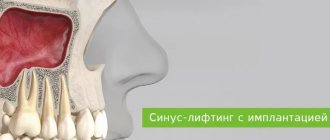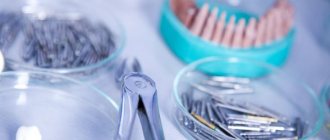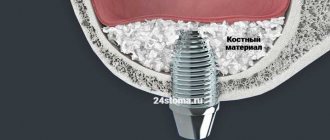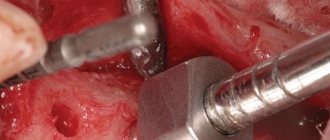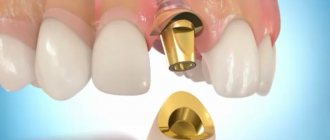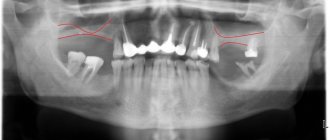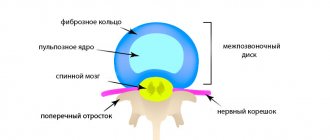More than 7 million people around the world have received dental implants to restore one, several or all teeth. Dentures on implants are a reliable, safe and well-researched method of restoring the aesthetics and functionality of the dentition: you can smile beautifully again and eat your favorite food without restrictions.
For those planning to install implants, we have prepared answers to the following questions:
Contraindications for installing titanium rods
Does it hurt during implant placement?
Installation stages (step by step with deadlines)
What not to do after installation?
What complications can there be after implantation?
Guarantees for implant installation
Contraindications
| Absolute (operation impossible) | Relative (the operation is temporarily postponed) |
|
|
Recovery period
Even if the procedure was successful, complications may arise in the first few days, especially if the patient neglects the doctor's advice. Until the soft tissues heal, it is recommended to eat soft or liquid food at a comfortable temperature. Eating hard, rough foods or hot food can damage the wound.
You should not smoke, as nicotine constricts blood vessels and tissues heal worse. In the first week, you should not overheat the body, engage in sports or heavy physical labor, otherwise bleeding may occur. It is better to sleep on the side where no surgical procedures were performed.
Does it hurt during implantation?
All procedures are carried out under local anesthesia, so the patient does not experience any painful sensations - he only feels the mechanical work of the doctor in the mouth, as during conventional dental treatment. In fact, the manipulations performed when installing an artificial root are less invasive and traumatic than when removing a tooth.
If you are very worried and are terrified of the upcoming operation, the clinic may offer implantation under sedation - in a relaxed state, but in full consciousness. The patient is given drugs that put him into a light sleep and he ceases to experience anxiety.
Is this surgery expensive?
It is difficult to say definitively how much a sinus lift costs. This depends, for example, on the region where this operation is performed. But here’s what’s surprising: the doctor’s qualifications, which should make the procedure more expensive, often work in the opposite direction: a doctor who is confident in his abilities does not waste extra time and is able to see more patients. Therefore, he does not charge exorbitant prices and does not scare away his clients with them. In general, the price for a sinus lift cannot be as high as for installing an implant. The only exception can be an operation in which both bone augmentation and implant installation are performed simultaneously.
The price of a sinus lift itself depends on the volume of material being built up and its nature. It could also be the patient’s own bone, which is worth nothing to him. You will only have to pay for the procedure of “mining” this bone. In another case, a high-tech synthetic material may be used, which has a certain cost.
Sometimes a doctor has to redo something that was done in bad faith in another clinic. And this can lead to a serious increase in the cost of the operation.
Stages and deadlines
1. Initial appointment (up to 20 minutes).
The implant surgeon gets to know the patient. Visually examines the oral cavity, assessing the current health of teeth and gums. To exclude the presence of contraindications and analyze the possible risks of complications after implantation, the doctor collects an anamnesis - information about the patient’s living conditions, diseases, bad habits, pharmaceuticals taken, etc. Answers any questions that may arise.
In what cases is it recommended to undergo tests before implantation?
Additional examination is necessary if the patient:
- has a chronic disease;
- undergoing any treatment;
- in the last 1-2 months, suffered from a serious illness or underwent surgery.
2. Comprehensive hardware diagnostics (up to 30 minutes).
Includes:
- Sight shot
. Necessary for assessing the condition of teeth located adjacent to the implant installation site. Detects inflammatory processes at the apex of teeth, hidden fractures/root injuries. Helps assess the quality of installed fillings (if any). Eliminates the risk of infection from neighboring teeth getting into the socket when an artificial root is implanted. - Panoramic photo (orthopantomogram)
. This three-dimensional image allows you to visualize the upper and lower jaws in an expanded plane. OPTG helps the doctor give an initial assessment of the condition of each tooth, its canals and roots, periodontium, maxillary sinuses, sinuses and other structures of the dental system. - CT (computed tomography)
. Allows you to study in detail the required area of the jaw in any plane at the required angle. Reveals hidden inflammatory and pathological processes in the periodontium. Helps to select the optimal dimensions of the titanium rod, as well as the installation location. Eliminates damage to the maxillary/mandibular nerve and blood vessels during implant installation. Provides important information for 3D modeling of the surgical process.
3. Computer modeling (2-3 days).
Three-dimensional visualization allows the implant surgeon to calculate and see the result of treatment before it begins.
The software helps the doctor determine the optimal locations for installing implants, taking into account the density and volume of bone tissue, select a titanium rod model, and calculate the angle and depth of implantation. The human factor is excluded, the result of implantological treatment is calculated with high accuracy. 4. Preparation (sanitation) of the oral cavity.
Before implantation, it is important to carry out professional dental hygiene (cleaning from plaque and tartar), eliminate existing inflammatory foci, and cure dental diseases identified during diagnosis (caries, pulpitis, etc.).
Jaw implantation using All-on-4 or All-on-6 technology also requires the preliminary removal of existing teeth, since a complete fixed prosthesis of 12 or 14 crowns is installed.
5. Osteoplasty.
If there is insufficient bone tissue volume, before installing a titanium rod, one of the following methods is used to build it up:
- Alveolar ridge clefting
. The doctor makes a cut into the alveolar process (the part of the jaw into which titanium screws are implanted) and increases its thickness using artificial bone material or graft. Installation of the implant is possible after 4-6 months. - Guided bone regeneration
. During the operation, the doctor places a synthetic bone analogue into the jawbone and covers it with a protective membrane. The patient's blood plasma is used to stimulate bone tissue growth. Implantation is possible in 3-6 months. - Sinus lift
. The volume of bone tissue in the area of the maxillary sinuses increases. There are open (more extensive surgery used for severe bone atrophy) and closed sinus lift (less invasive, with a slight lack of bone height).
Our clinic uses Straumann Roxolid implants, which allow us to avoid bone grafting in 95% of clinical situations, both when restoring one tooth and during total prosthetics of a toothless jaw!
6. Surgery (15 minutes).
Under local anesthesia, the doctor makes an incision in the gum and lifts flaps to gain access to the jawbone.
Then he prepares the implantation bed by drilling a hole of the required depth in the bone. After checking the depth of the canal with special tools, the implantologist bores it to the required width.
A titanium rod is implanted into the resulting hole. Its model, length and thickness are selected at the 3D modeling stage.
The implant is closed for 2-6 days with a plug, which protects the artificial root from microbes and mechanical influences.
The gum is sutured, closing the temporary plug.
On days 3-7 after implantation, the sutures are removed and an abutment is installed.
7. Orthopedics.
It takes place in two stages. At the first visit, an impression is taken within 20-30 minutes, on the basis of which a temporary crown will be made in the dental laboratory. At the second visit (after 2-3 weeks, depending on the clinical picture), the prosthesis is fixed to the abutment (duration - up to half an hour).
Types of sinus lifting
There are two main ways to successfully install a dental implant in the maxillary sinuses:
- Open type;
- Closed type.
Carrying out a closed sinus lift is advisable when the bone height parameters range from 7-8 mm. If this distance decreases, you can count on performing an open sinus lift. Moreover, it is important to note that the first type of intervention is more gentle. The procedure is performed with a surgical burr or osteoma.
When performing an open sinus lift procedure, the cavity can be filled with osteoplastic materials using a small “window” that is made on the side of the sinus using a specialized sinus lift tool. The main conditions for successful surgery for the maxillary sinus are the need for a thorough examination of the patient in order to plan the course of his treatment.
Description of the algorithm for performing surgical intervention
If a sinus lift operation is necessary, the work will consist of the following stages:
- Initial consultation, which should exclude inflammation in the areas that will be treated;
- Computed tomography, which will help create a 3D model of the jaw;
- Laboratory stage with sending a computer plan for laboratory research and production of a stereolithographic plastic model of the jaw.
If you follow this sequence of planning during an intervention, you can reduce the risk of unforeseen situations during the operation, complete it faster, and protect yourself from possible complications.
Implant installation methods
Installing implants allows you to replace missing teeth with new ones that are practically no different from natural ones. Today, there are several main options and ways to install an implant.
Classic implantation
Classical implantation allows you to insert implants in any quantity, even in the absence of teeth in the oral cavity. This process is very lengthy, however, in the end it gives an excellent result. The chewing function and aesthetics of the smile are completely restored. At the first stage of implant installation, artificial roots (the basis of the implants) are implanted into the bone tissue. Then the abutments (support for the crown) are implemented, and only after that it becomes possible to place a dental implant.
One-stage implantation - we will place the implant immediately after tooth extraction
In some cases, an implant can be installed immediately after tooth extraction, without waiting for the tissue to heal. This option allows you to prevent bone tissue atrophy, however, the operation can be performed only in the absence of any acute diseases of the teeth and gums in the patient.
Express implantation
In the case of express implantation, the implant and crown can be installed immediately after it is implanted into the bone. Place an implant
This method is possible provided that one or more teeth located at a distance from each other are restored. A combination of express implantation with other methods is often practiced, provided that express is used for the front teeth. It is possible to place a dental implant using the express method, provided that inflammatory diseases in the patient’s oral cavity have been treated, and there is no need to build up bone in the place of the missing tooth.
What is this
A surgical procedure performed to increase the amount of bone tissue in the upper jaw.
In the cranium around the nose there are large maxillary sinuses. They are located immediately above the roots of the lateral chewing teeth. The inside of the sinuses are covered with a thin protective shell, which is lifted and the formed space is filled with material.
As a result of the operation, surgeons obtain sufficient thickness for reliable installation of the implant.
Note! The term “lifting” is used in medical cosmetology, but it has nothing to do with sinus lifting in dentistry.
A cosmetic procedure is a series of injections with fillers containing hyaluronic acid, which “tightens” the oval of the face and smoothes out facial wrinkles.
Recommendations after implant installation
- During the first 2-3 hours after surgery, eating is strictly not recommended. What happens if you neglect this? Disastrous consequences include: sutures coming apart, infection of the titanium rod installation site, biting the tongue or cheek.
- On the day of surgery, you do not need to brush your teeth or rinse your mouth. Starting from the second day, you can clean them, but with a soft brush. It is better not to touch the operated area. You can also rinse your mouth with an antiseptic solution after eating, but very gently.
- For the first two to three days, you should strictly not consume hot/cold food or drinks. It is recommended to exclude sour and spicy foods from the diet. You can eat broths, yogurt, and pureed foods.
- For 2-4 weeks, avoid air travel, saunas, increased physical activity, and hypothermia. Otherwise, the risk of implant rejection increases.
- Completely stop smoking and drinking alcoholic beverages for at least five days. During the period of osseointegration of implants (3-6 months), reduce the number of cigarettes smoked to a minimum.
Compliance with the following rules will not only help shorten the rehabilitation period, but will also minimize the risk of complications.
Closed
Unlike the open one, the closed version is carried out only simultaneously with the installation of implants. The gum incision is the same as for conventional implantation.
First, preparations are made for implant installation. A bed for the implant is formed. Then a special instrument is installed through it, it is called an osteot, with the help of which the bottom of the maxillary sinus is raised. After raising the bottom, the implant is installed.
The advantages of this method are the minimal invasiveness of the procedure and an easier rehabilitation period. However, in this case it is possible to raise the bottom of the sinus only by 2-3 mm. If you try to perform a closed sinus lift with a fundus elevation of 4-5 mm, there is a risk of rupture of the mucous membrane of the Schneiderian membrane.
First, a bed is formed for installing the implant. Through it, the bottom of the maxillary sinus is raised. The procedure involves one-stage installation of implants.
Complications - when should you see a doctor?
If you experience any of the following symptoms, contact your doctor as soon as possible:
- After the 3rd day of surgery, pain gradually increases
. It is quite normal to experience minor pain for the first 2-3 days, but no more. - On the 4th day the swelling began to increase with an increase in body temperature
. Normally, it should subside on the third day. If it grows, then there is a problem. - After 4-5 hours, the surgical wound continues to bleed
. Minor bleeding in the first 2-3 hours is normal. But you should be wary if the wound continues to bleed. - Part of the face became numb, and there were difficulties opening the mouth
. This is due to stretch/compression or injury to the nerve. It occurs very rarely (in less than 3% of patients) and is associated with physician error. - The temperature rose sharply to 39° on the fourth day
. An increase in body temperature to 38° in the first three days after surgery is a completely normal reaction of the body to surgery. But if after three days you notice a sharp increase in temperature, then you need to consult a doctor. - Purulent discharge appeared from the implant site
. This indicates the presence of an inflammatory process due to infection of the hole.
Advantages of using sinus lift technology
The described process has been known to dentists for more than three decades. Many patients have already appreciated the number of benefits that dental implantation provides, even when it was previously impossible to install an implant.
Currently, you can confidently count on receiving such services, the cost of which will be determined individually.
Reviews about sinus jaw lift will help you decide on this procedure. This article is for informational purposes only, please consult your doctor for details! Ask your doctor about contraindications and side effects.
Answers to popular questions
Is it possible to install implants for diabetes?
Controlled diabetes mellitus is not a contraindication to dental implantation. Based on the results of the analysis for glycated hemoglobin, patients are divided into three groups:
- less than 6% - dental implants can be placed without any restrictions;
- from 6% to 8% - implantation is possible, but with minimal risk (special preparation is required);
- more than 8% - surgery is possible only after the patient reduces the level of glycated hemoglobin to the required levels.
The Family Dentistry clinic successfully performs dental implantation for diabetes mellitus according to an individual treatment plan, taking into account the specific clinical picture. We try to use technologies that allow us to avoid bone grafting - the operation is less invasive (traumatic), and healing is easier. In addition, we install Straumann implants with the hydrophilic surface SLActive, which eliminates blood supply disturbances in diabetes and promotes successful osseointegration in bone tissue.
Is it possible to place implants with periodontitis or periodontal disease?
Yes, you can. But treatment is required first, incl. Possibly gum and bone grafting.
With periodontitis, bone tissue atrophies, so osteoplasty may be required at the time of implantation of a titanium rod into the jawbone. Some clinical situations allow you to install an implant immediately after gum surgery for periodontitis, while others require up to 6 months for the bone material to engraft.
In patients with periodontitis, the gums are less dense and decrease in width and height. This is dangerous because a pocket may form between the neck of the implant and the gum, in which bacteria will accumulate. As a result, there is a high risk of titanium screw failure. That is why the dental surgeon first performs gum surgery.
What anesthesia is used to place dental implants?
Local anesthesia is most often used. It is enough so that the patient does not experience any pain when installing implants. A combination of local anesthesia with sedation (a state of drug-induced semi-sleep) helps to cope with the experience.
It is important to understand that the jawbone is not innervated. Therefore, it is necessary to numb only the mucous membrane, which local anesthesia copes well with.
Why does an implant take root faster when installed in the lower jaw than in the upper jaw?
Yes, titanium rods implanted in the lower jaw take root within 2-4 months, and in the upper jaw - from 3 to 6. This is due to the fact that the mandibular bone tissue is more dense.
What are the dangers of smoking after implantation?
Until about 10 years ago, smoking was an absolute contraindication to the installation of implants, and many dental clinics simply refused such patients who were at risk.
Nowadays, even heavy smokers are implanted, but smoking remains the worst enemy of dental implants. It promotes the growth of bacteria in the mouth and accelerates the formation of plaque. It also leads to irritation of the mucous membrane and constriction of blood vessels, slowing down the healing process of tissues after surgery. Thus, smoking not only significantly slows down the process of engraftment of artificial roots, but also increases the risk of their rejection.
Can I drink alcohol after getting dental implants?
It is advisable to avoid alcoholic beverages not only while taking antibiotics after implantation, but also for the entire period of osseointegration (i.e., 3-6 months) for the following reasons:
- irritates the mucous membrane, slowing down the process of engraftment of the titanium rod;
- dilates blood vessels, causing bleeding at the site of implantation of the artificial root;
- increases the risk of developing hematoma.
Still have questions about installing implants? Get a free consultation with an implantologist.
| Expert, author of the article: Akhtanin Alexander Pavlovich Orthopedic dentist, implantologist 35 years of implantation experience Material updated: October 11, 2022 |
Materials for bone grafting
All types of materials used in sinus lifting can be divided into 3 types - autograft, xenograft and synthetic bone. Let us dwell in more detail on the features of each type.
Autograft
The best option for the procedure is the patient’s own bone – an autograft. A small piece is cut from the lower jaw or chin, then the material can be crushed and replanted while raising the floor of the maxillary sinus. The advantages of this approach are complete immune compatibility, i.e. the autograft takes root perfectly. But there are also disadvantages - sometimes a lot of material is required (which becomes traumatic for the patient, because after osteoplasty 2 operated areas will already heal). Disadvantages also include increased resorption of the autograft during the healing period; as a result, the patient sometimes requires repeated augmentation.
Previously, another type of natural material for osteoplasty was used - allograft. This substance is taken from a donor (most often cadaveric material is meant) and goes through several stages of processing and disinfection. The material is outdated due to unstable survival rate and ethical component.
Xenograft
Bone replacement materials of animal origin are obtained from bovine bone. The substance is crushed, sterilized and part of the impurities – collagen (or protein, protein) – are removed. The result is a substance that is sorted according to the diameter and shape of the particles - crumbs with a diameter of 0.25-1 mm, chips - from 1 to 2 mm, granules - from 4 to 6 mm. The crumbs can be pressed into blocks up to 3 cm long.
A large amount of proteins makes the material less dense, which reduces the fixation ability when installing an implant. It is considered optimal when the material contains at least 75-90% minerals, and the rest is collagen.
Xenografts have good survival rate and relatively low cost, so this type is often used in osteoplasty. After surgery, the material begins to interact with surrounding tissues. Gradually, your own young bone is formed, and the graft is absorbed. The following materials are widely used for augmentation: Swiss Bio-Oss from Geistlich Pharma and Russian Osteomatrix. Similar bone materials can be mixed with autografts.
Synthetic material
Synthetic bone has a complex mineral composition, presented in the form of granulate - medical two-phase calcium phosphate. It contains artificial crystalline hydroxyapatite and beta-3-calcium phosphate (an analogue of natural hydroxyapatite, which is the main building block of bone). The diameter of the granules is about 0.2-2 mm. After replanting, two-phase calcium phosphate is also gradually replaced by living young bone. Popular brands that have confirmed their high quality and biocompatibility are BoneCeramic from Straumann and Maxresorb from Botiss Dental.
Very often, along with augmentation, a PRF membrane (or PRF, PRP) is applied. This is a thick gel-like preparation obtained from the patient's own blood. The membrane contains a huge amount of fibrin protein, platelets and growth factors, which actively stimulate regeneration processes. This method will be a significant addition to osteoplasty, especially if large areas were operated on - this way the patient’s rehabilitation will be much faster and less painful.
